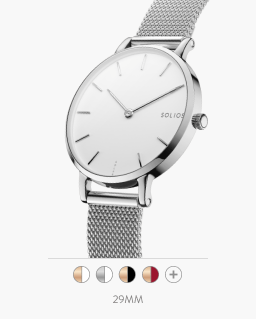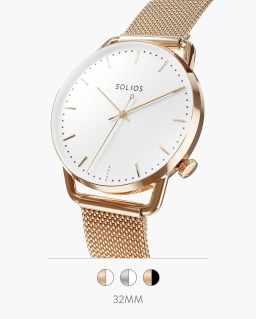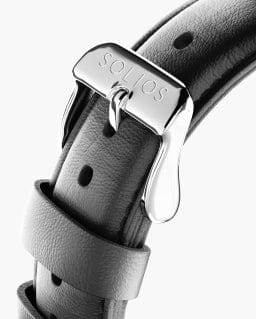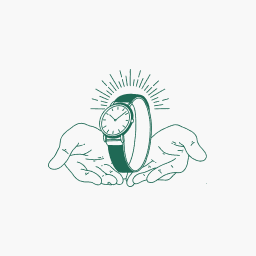In fashion, there will always be trends. Good and bad. Inspired by the runways and high street fashion, they are what shape the industry. You can almost map out the patterns of what has come and gone, and come again. They say in fashion, history repeats itself. But what if, it’s time to break, not the repetition of trends, but the ongoing practice of fast fashion. Buying pieces based on a trend that leaves as quickly as it arrived? To break the underlying culture that has arisen in the fashion industry, of promoting quantity over quality. There has been a new ‘trend' on the rise, however, it is here to stay. The benefits of slow fashion are increasingly being known and practiced in the industry. It has only just begun to place its mark. But, unlike almost every trend, this one will not be leaving so soon. It emphasizes putting thought into the pieces we add to our closet. Slow fashion forces us to think about how something is made and how our purchases create a chain reaction in the fashion culture; consumerism; the planet; other people; and ourselves.

What is Slow Fashion?
Slow fashion versus fast fashion, what’s the difference? Fast fashion is a fashion industry trend that has increasingly become a norm as the years have continued from the 60s. It’s the process where fashion brands come out with multiple collections, at an intensely fast rate. We purchase about 60% more clothing than 20 years ago. Clothing goes out of style just as fast as it comes in. With this industrial process, fast fashion clothing brands touch on many fashion trends as they come in, and move on to the next one just as fast. What once may have been a manner for the everyday joe to access high fashion trends, has become a danger to the ecosystem; working standards in poorer countries; and the fashion culture. With such a negative impact, it is hard to stay positive about the fashion industry. However, that is why slow fashion is becoming more and more popular as people become aware of the damages of fast fashion.
It Will Save the Fashion Industry and Planet
Slow fashion is an approach taken with an awareness of the planet; working conditions; value; and durability of the piece being fabricated and put on the market. The focus is not on selling as many trending staples as possible but to promote buying pieces with the intent for the use and durability. Instead of placing a focus on offering the largest variety of accessible clothing, the practice of slow fashion emphasizes selling pieces that are made from sustainable material. Let's put this into perspective, you can think of fashion brands which are very present on social media and in the fashion community. Fast fashion brands place an emphasis on offering a large variety of styles that change constantly. Their message is based on following fashion trends and always owning the newest collection. Many use materials that have harmful dies and waste a large amount of water. These are some of the basis of a fast-fashion brand. Although the clothing is attainable by price, it promotes detrimental behaviour that, if continued, will have an increasing effect on the health of our planet and consumerist culture. On the other hand, we have slow fashion brands. Just as fashionable, slow fashion brands place an emphasis on collecting pieces in your wardrobe that last a long time. They promote value and durability. The materials they use are less harmful on the planet and their working conditions are fair. With most slow fashion brands, you don’t compromise the style and fashion for the cause. Their collections are much smaller and focus on wardrobe staples like trousers, denim, basics, and timeless statement pieces. Slow fashion is becoming more prominent in the fashion industry, and it’s easy to see why with so many direct and indirect benefits!
Direct Benefits of Slow Fashion

Helping our Planet
The most obvious benefit of slow fashion is its impact on the planet. Currently, the fashion industry is responsible for up to 20% of the world’s industrial wastewater; 10% of global CO2 emissions; and 11% of pesticide use. In the watch industry, single-use batteries are the most commonly used; resulting in 1 Billion wasted watch battery every year.
Those are some big shoes to fill, but the future looks brighter as slow fashion takes charge in the industry. Slow fashion brands use materials either made from sustainable sources from the earth and/or recycled material. For example, here at Solios, our vegan leather watch straps are made without using any animal skin and are free of PU, PVC, and toxic waste. When buying clothing and accessories from slow fashion brands, you are guaranteed to not only encourage a sustainable fashion culture but moving forward in healing the planet. It can take over 200 years for a regular t-shirt to decompose as they are mostly made with unnatural and highly processed materials. On the contrary, many slow fashion brands produce pieces that are made from materials that derive from the earth itself. There are sneakers made from bamboo, shirts made from cotton (the proper way), and vegan leather made without harming an animal or the planet.
Helping Other People
Another benefit of slow fashion is how it emphasizes the importance of good working conditions. More and more fast fashion brands are being highlighted for poor working conditions. Where employees work unrealistic hours, are paid below minimum wage, and go undetected to the consumer. The benefits of slow fashion affect so much more than a greener earth. It affects people, their families, and the standards of living that we unknowingly promote. Many factory workers, linked to fast fashion brands, work 12 to 13 hours a day, 7 days a week. As their wages are low and they must support their families and level up to the economy, declining extra hours is not possible. Many slow fashion brands ensure that the process from collecting the materials to shipping a product to your doorstep is within a fair working environment. Wages are to scale, work environments are safe, and employees are treated with proper respect.

Helping Ourselves
Another incredible benefit of slow fashion is the transparency behind it. You have the freedom to know the story behind your purchase. You can know where the material is from; how it was cultivated; where it was fabricated; how the employees are treated; and how you are actively affecting the fashion industry. To put this into perspective, let’s think of green-washing. Some fast-fashion brands will announce a new sustainable clothing line, where pieces are either made using recycled materials, eco-friendly processes, or that have better working conditions. This is an amazing start. However, they overshadowed the fact that the rest of their fast-moving collections continue to be fabricated using unsustainable materials or unethical processes. They are not transparent in their practices. With slow fashion brands, it is not about being sustainable to fit a ‘trend’. There is an emphasis on being real, and human. Constantly moving towards choices that move forward and have an increasingly positive effect on the environment, people, and the fashion culture. Having access to transparency within a brand allows you to make purchasing decisions based on your values. You shouldn’t need to do abundant research to know if a brand is sustainable. A true brand, aligned with slow fashion, is open and honest about the details in which its products are fabricated and dealt with. Thus, an amazing benefit to slow fashion is knowing what you are promoting, what values you are encouraging, and what is affected by your purchase.
The Indirect Benefits of Slow Fashion
Slow fashion is not only on the rise due to its direct benefits on the industry, planet, and the culture of consumerism. There is an underlying benefit that many people support, without even being aware. Slow fashion promotes the idea that you are what you wear. Fashion is a known attribute to one’s personality, their values, and what they want others to know about them. The shirt you bought from Forever21 has no meaning, it was fabricated to replicate a trend. As fast as you took it off the rack, it will either fall apart from cheaply made fabrication or end up at the end of your wardrobe as it’s a fad that is over. In such a fast-paced society, we need to slow down and put more thought into our actions. Think about the brands you publicly support, what do they say about you, your values, and the message you send about the progression of the environment. For example, the watch you wear. Is it sustainable? Solios watches are made to last, this is why all our watches are solar powered, and use materials that cna last well over 30 years. The battery is run by a solar panel, preventing you from having to change the battery every one to two years. As such, you are wearing more than an accessory that tells the time, it's a symbol of where you are moving as an individual and where you envision the state of our planet; the fashion industry; and the culture of consumerism in the future.

Prioritize Slow Fashion
It’s time to prioritize slow fashion. Placing more intent and thought into our everyday purchases as well as our fashion statements. Whether for the direct or indirect benefits of slow fashion, there are a plethora of reasons why slow fashion is making a dent in the industry. Slow fashion is not a daunting discovery or change. It consists of small steps towards a bigger picture. You can start by swapping certain fast fashion brands you support with other slow fashion brands that are making a difference. It can be as small as buying a watch with a solar-powered battery or sneakers made of bamboo instead of unsustainable plastics. At Solios we are consistently working towards becoming even more sustainable in all approaches. As mentioned, our watches are powered by solar energy. The amount of batteries a solar-powered watch saves per year is about 300,000, 000! By just one change in our system, we are moving towards a more sustainable future. We are not perfect, but we will always strive to move forward. We hope to encourage others to do so as well through our actions and values.



